Secrets of the Keyboard workshop attracts 71 middle and high school students
Amid its efforts to engage youngsters and members of the broader community, Science Tokyo hosted “Secrets of the Keyboard,” a two-part workshop for middle and high school students, on September 14 and December 15, 2024. The event, which focused on learning how a computer keyboard functions and creating an original mini-keyboard, attracted a total of 71 participants, 18 of whom joined the fun virtually.
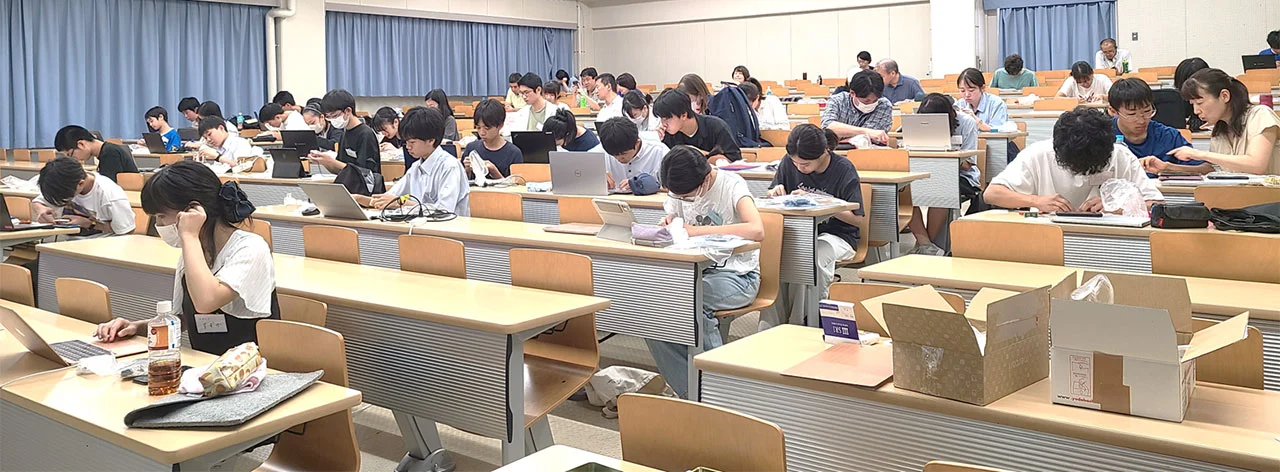
Unlike smartphones and other devices, personal computers use a dedicated input device called a “keyboard” which is ideal for document creation, programming, and gaming. One aim of this workshop was to promote the use of personal computers and boost interest in information science through a better understanding of the structure and ingenuity of keyboards.
To begin with, the participants learned about the components of a computer and the principles of keyboard operation. A keyboard basically consists of a number of switches connected to a microcomputer, but utilizes a keyboard matrix1 to process a large number of keys with a limited number of microcomputer terminals. In addition, since a malfunction referred to as ghosting2 can occur when three or more keys are pressed simultaneously, the participants also learned about the method of anti-ghosting3 to prevent this.
-
Keyboard matrix
Method of wiring a large number of key switches in a grid pattern -
Ghosting
Occurs when three or more keys are pressed simultaneously, but a key that is not pressed is mistakenly registered -
Anti-ghosting
Method to prevent ghosting with the use of rectifier diodes
Next, the participants designed their own unique mini-keyboards. The kits utilized a breadboard so no soldering was required, and participants could freely assign the six key switches to their keys of choice.
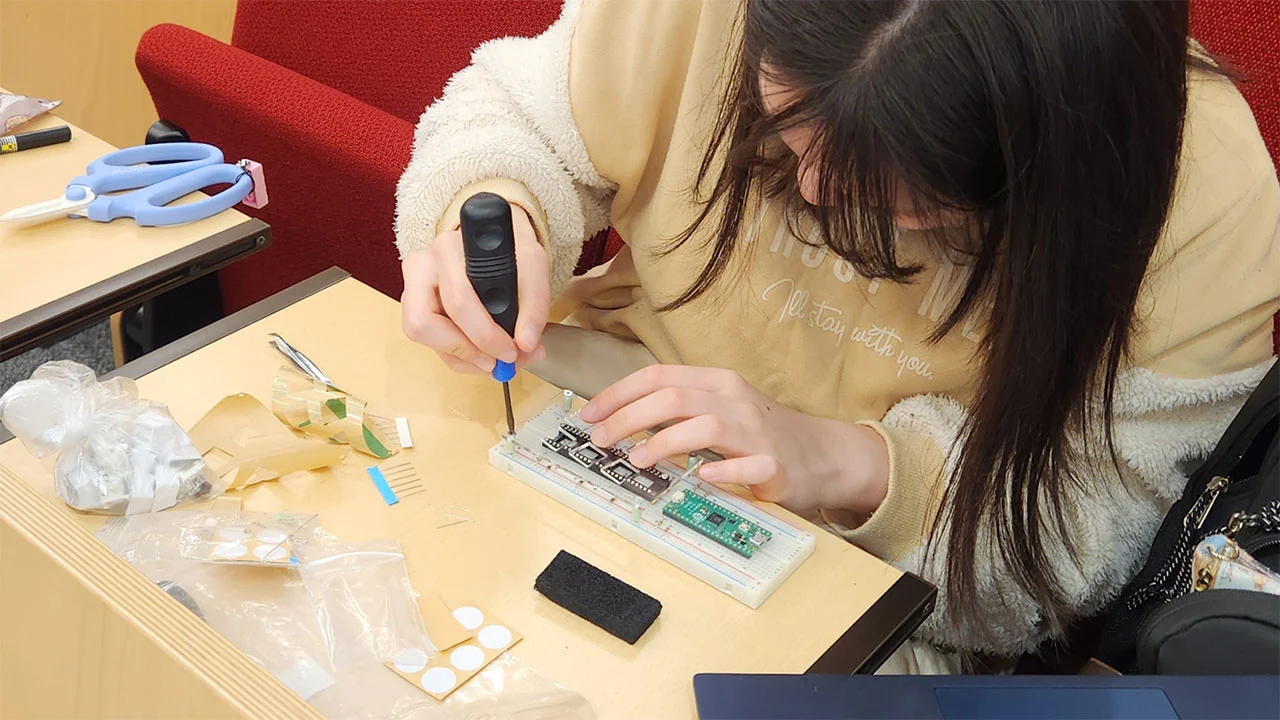
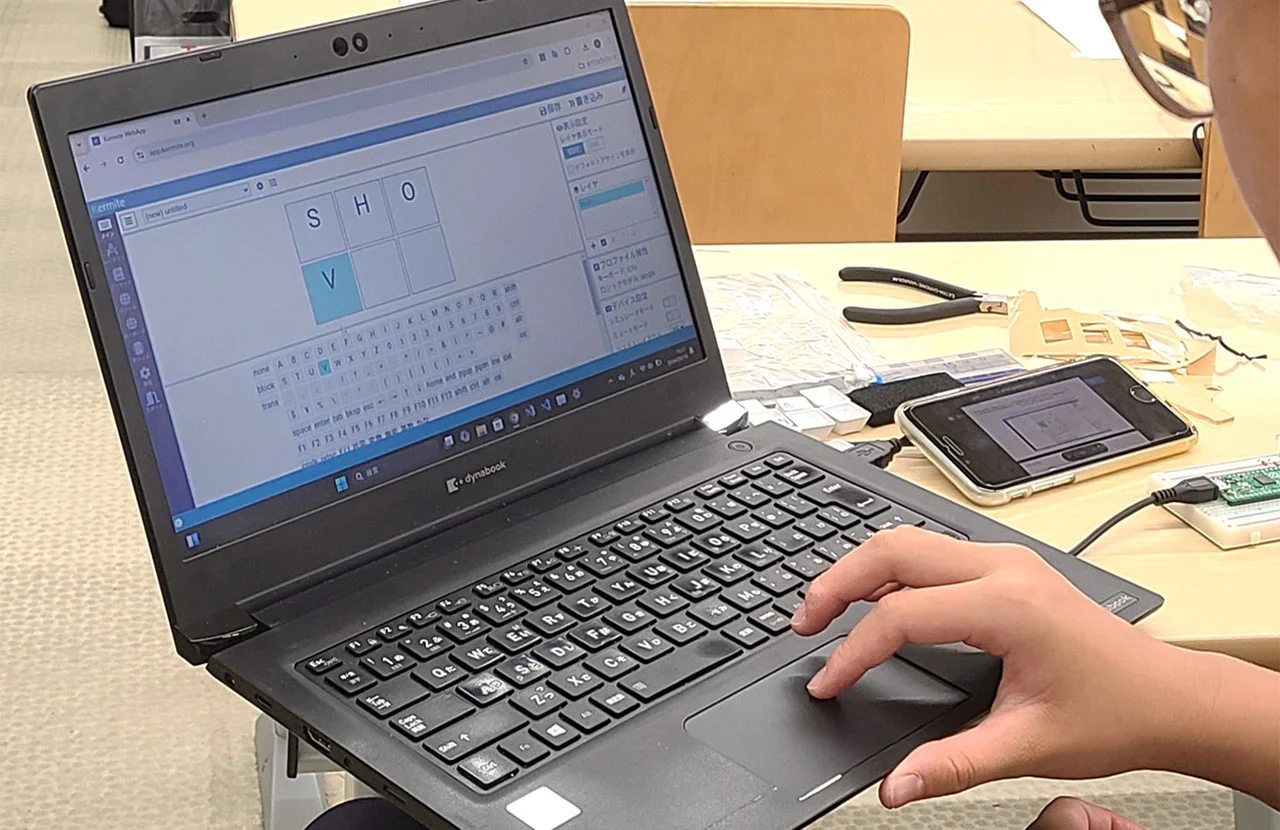
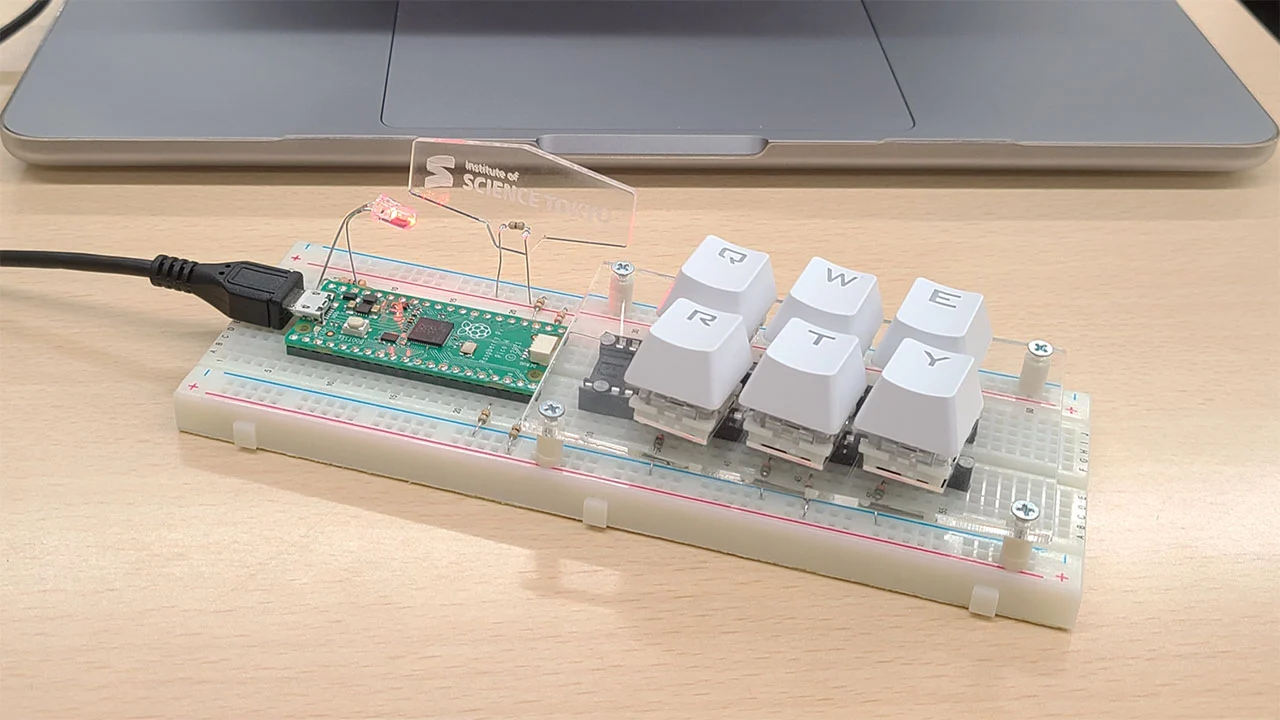
To further stimulate the participants, the September session featured a lecture by Masayuki Yamamura, a professor at Science Tokyo’s School of Computing, who introduced the extensive possibilities of information science and spoke about the keyboard as “an extension of a programmer's hand.” In the December session, blueqat Inc. CEO Yuichiro Minato was present to share his thoughts on “a keyboard for quantum computers.”
Some 10 types of mechanical keyboards were also on display at the venue, and participants were able to experience the differences in key switches, for example, those of the red axis and blue axis. The youngsters also learned that they could create key assignments that allowed simultaneous presses such as [Ctrl]+[c] (to copy) to be set to a single key. The key assignment presentation included the following unique settings.
-
Using [Ctrl]+[Shift]+[v] to paste as plain text
- Using the line break code “\n” during programming
- Setting all 6 keys hit repeatedly during a game to [F]
- Using [Print Screen] and [Win]+[Shift]+[s] for two different types of screenshots
- Switching instantly to the lock screen by pressing [Win]+[L]
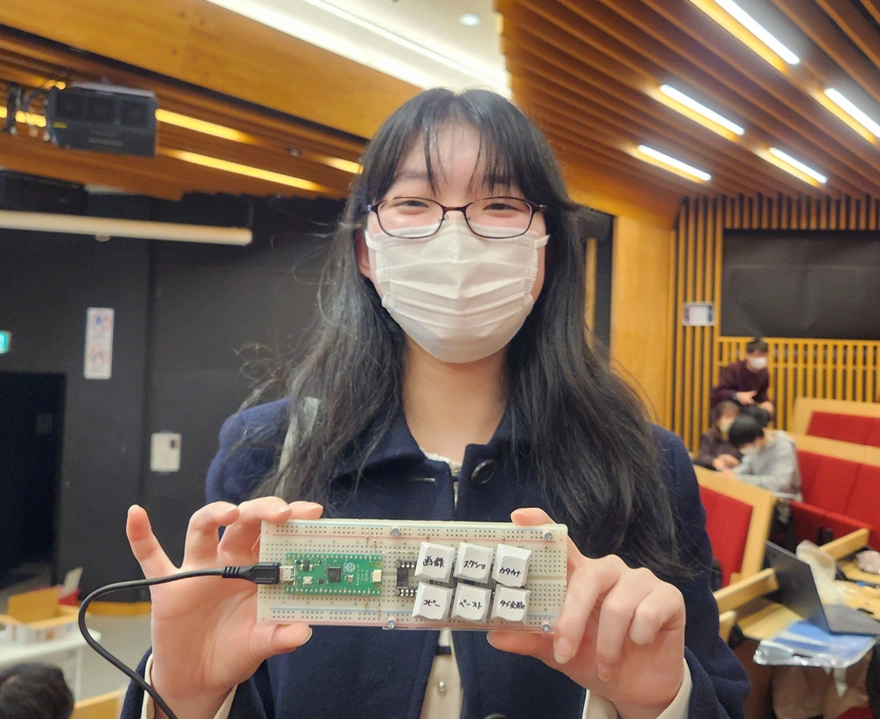
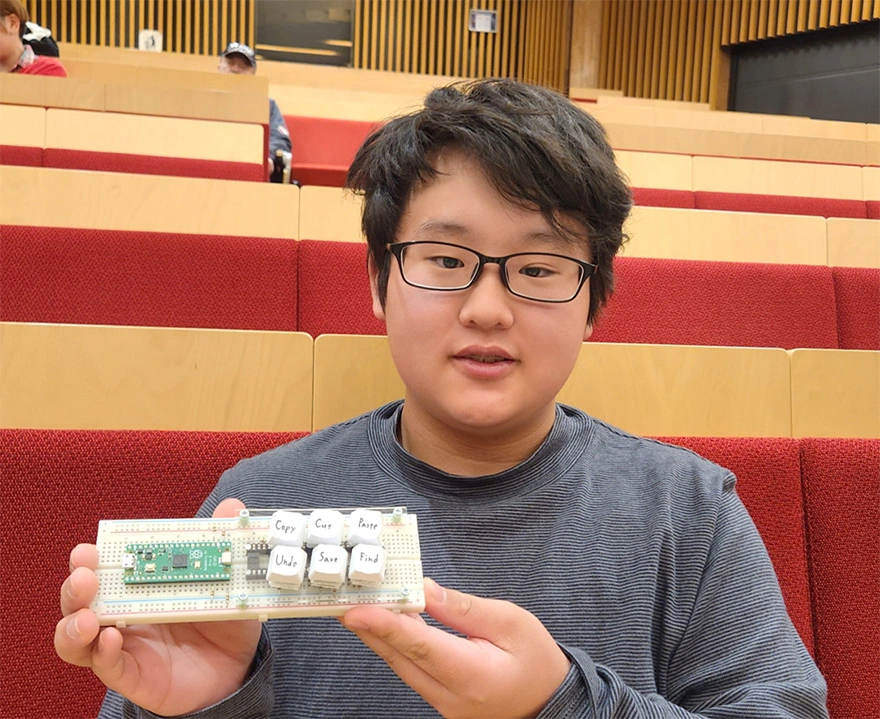
Participants with their completed mini-keyboards
Feedback from the participants was positive. Some were amazed by the key matrix mechanism, while others found it fascinating to solve problems by devising electronic circuits. One youngster said they wanted to build an Enigma cipher device with the knowledge they had gained. During his closing, Yamamura offered some final words of encouragement. “I would like to utilize information science to realize sustainable agriculture in the future. I hope that you, too, have become more aware of the power of information science in various fields, and use it to pursue new possibilities.”
This event was supported by the Science Tokyo Fund, AirTrunk, and blueqat, Inc. Vignette & Clarity, Inc., a Tokyo Institute of Technology-born4 startup, provided support with the design of the mini-keyboard.
4.Tokyo Medical and Dental University and Tokyo Institute of Technology merged on October 1, 2024, to form Institute of Science Tokyo (Science Tokyo).
Related articles
Contact
Yamamura Laboratory
Department of Computer Science, School of Computing
Email yasuda.s.ad@m.titech.ac.jp